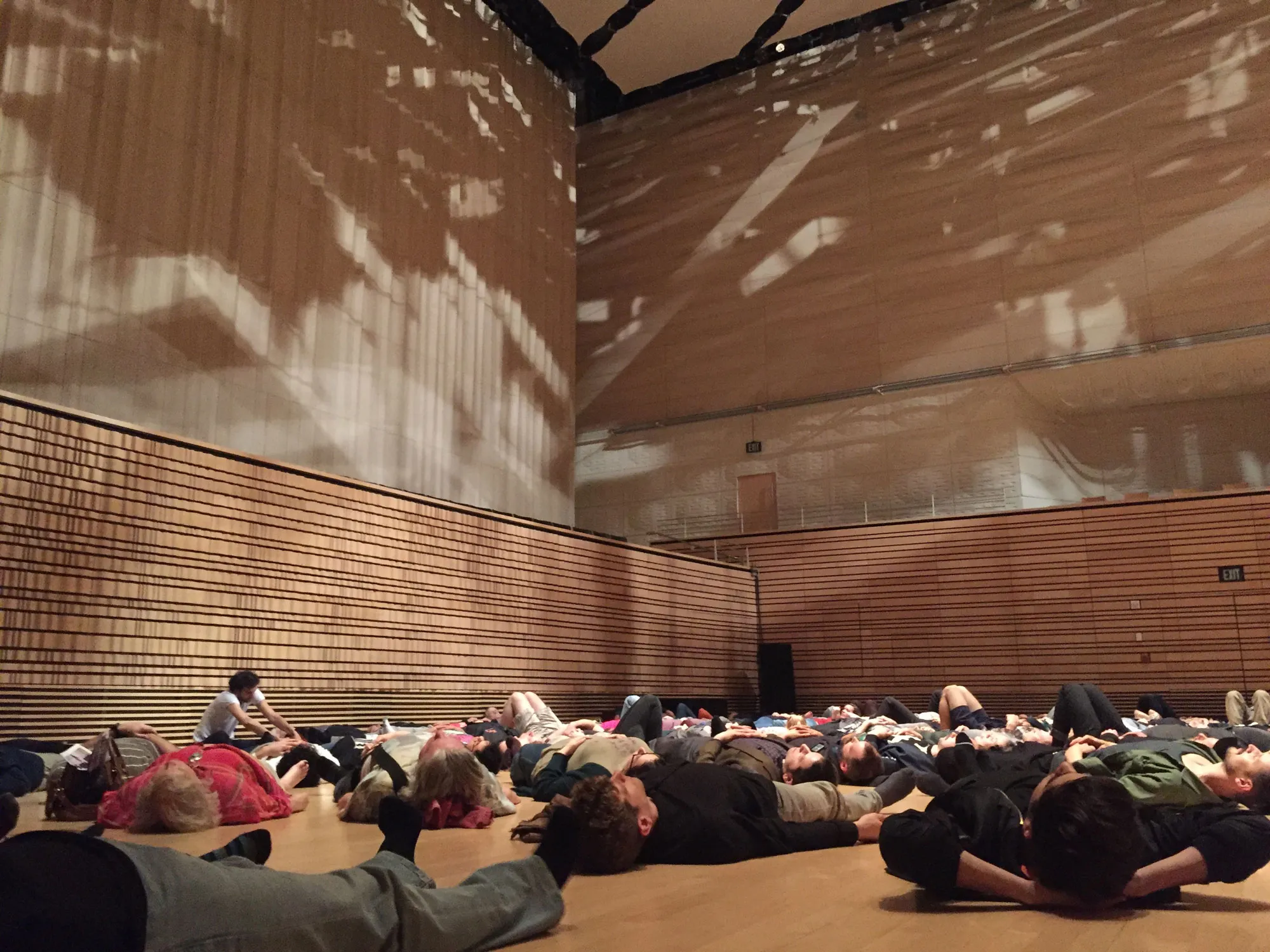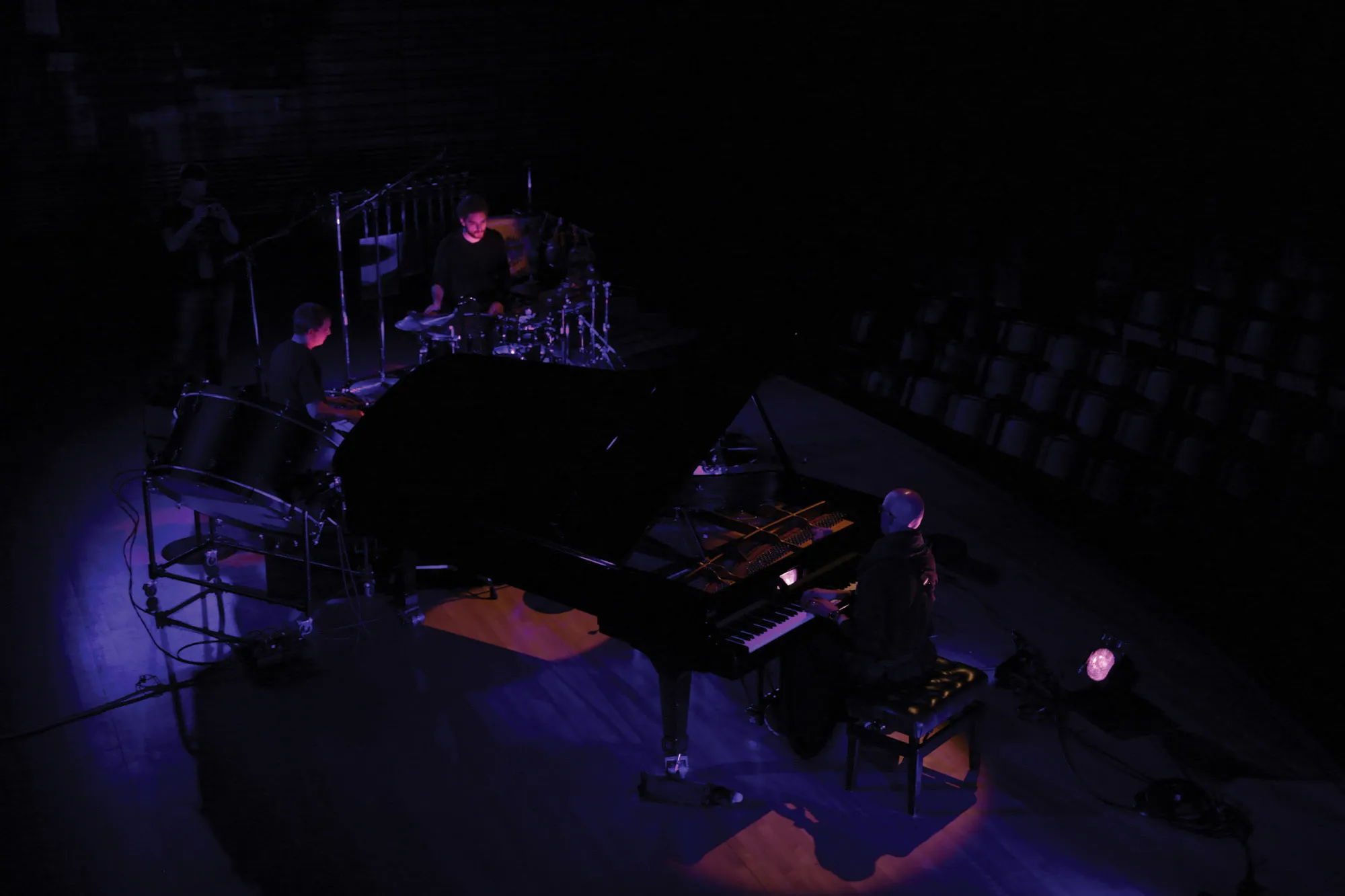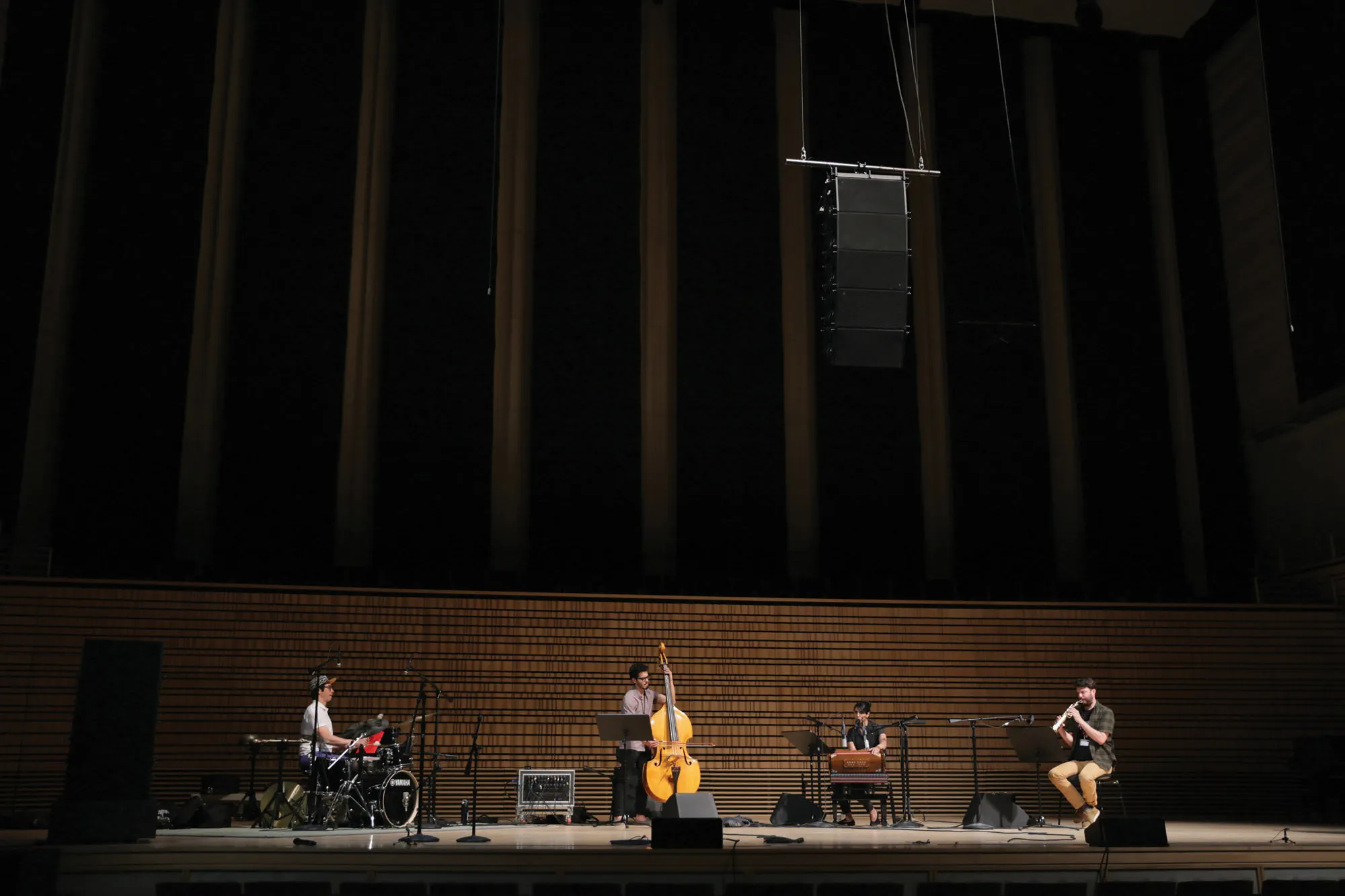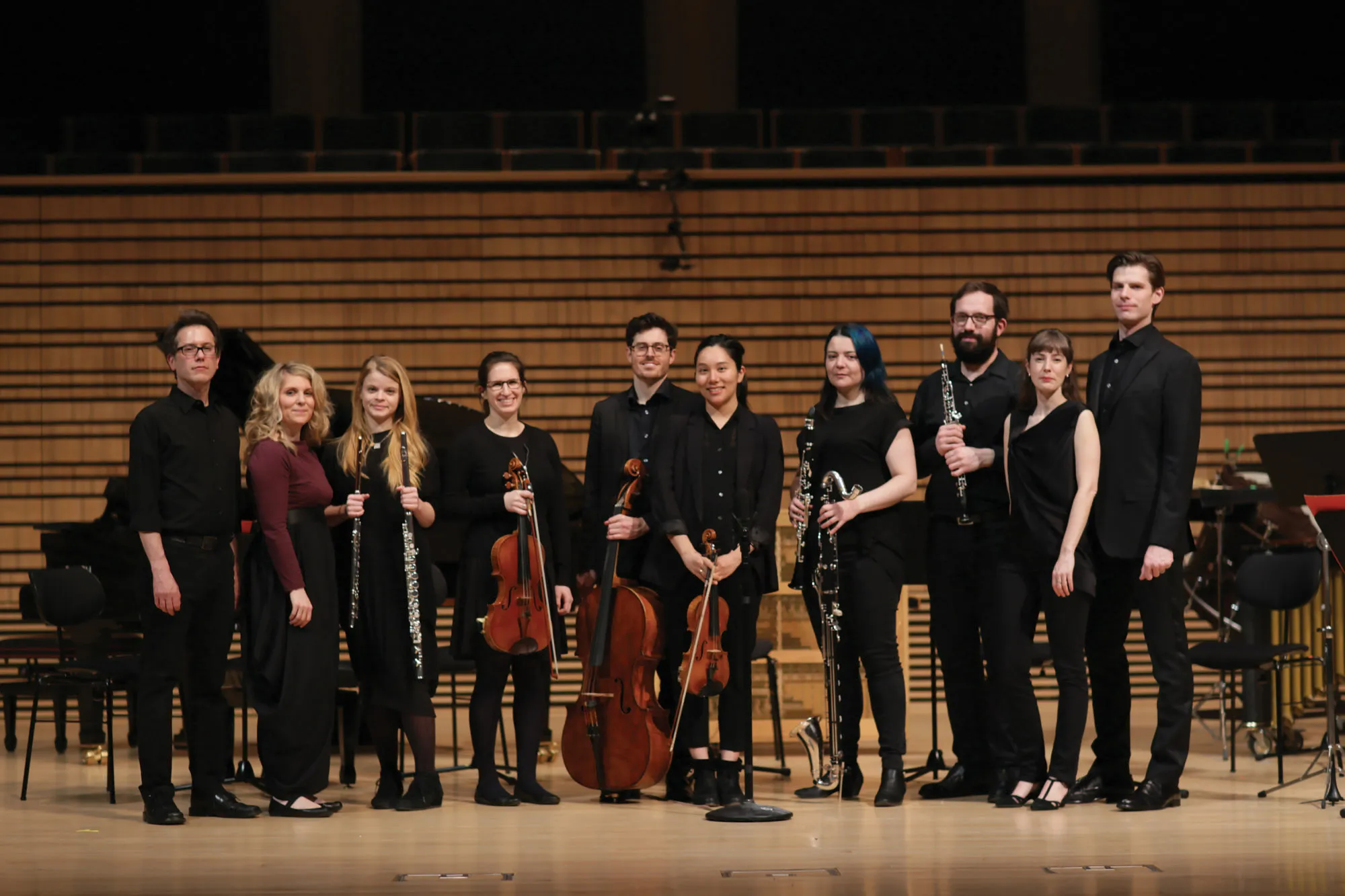From tight rhythmic unisons to expansive, wandering melodic lines, Amirtha Kidambi’s Elder Ones and Longleash represent many possible futures for contemporary experimental music. Each group features highly accomplished, technically virtuosic musicians, conversant in a wide range of musical styles and idioms, driven by the goal of an ever-expanding musical vernacular.
Elder Ones, a quartet performing the compositions of vocalist Amirtha Kidambi, lies nestled in a Venn diagram of diverse musical spheres and communities in New York City. Bandleader Kidambi performs on harmonium and draws her vocal influence from both Indian Carnatic and Western Classical training. With saxophonist Matt Nelson, bassist Brandon Lopez, and drummer Max Jaffe, the band expands its influence to the realm of hip-hop and free improvisation. Oscillating between modal, Sufi-like circular grooves and jagged, brutal rhythmic constructions, the band equally suspects Thyagaraja, Coltrane, and Stockhausen as illegitimate fathers of their sound.
Named for the Cold War-era CIA program that aimed to undermine Soviet culture by secretly disseminating art from the American avant-garde, Longleash relish the paradox of experimental sound. Formed in 2013 by violinist Pala Garcia, cellist John Popham, and pianist Renate Rohlfing, the group is focused on the commissioning and performance of music by emerging composers. Pursuing the freedom of exploration within a pre-determined set of limitations, they mine the depths of the traditional piano trio in search of sounds and ideas yet undiscovered. This performance featured works by Juan de Dios Magdaleno, Francesco Filidei, Yukiko Watanabe, Christopher Trapani, and Clara Iannotta.
PROGRAM
Longleash Trio
clara iannotta, Il colore dell’ombra
yukiko watanabe, ver_flies_sen
chistopher trapani, Passing Through,
Staying Put
juan de dios magdaleno, Strange Attractors
francesco filidei, Corde Vuote
pala garcia, violin
john popham, cello
renate rohlfing, piano
Amirtha Kidambi’s Elder Ones,
Mother Tongues Suite -
i. Sathya-Yuga
ii. Treta-Yuga
iii. Dvapara-Yuga
iv. Kali-Yuga
amirtha kidambi, voice/harmonium
+ compositions
matt nelson, soprano saxophone
brandon lopez, bass
max jaffe, drums/percussion
Main Image: Amirtha Kidambi on stage in the concert hall in 2016. Photo: Mick Bello/EMPAC.





